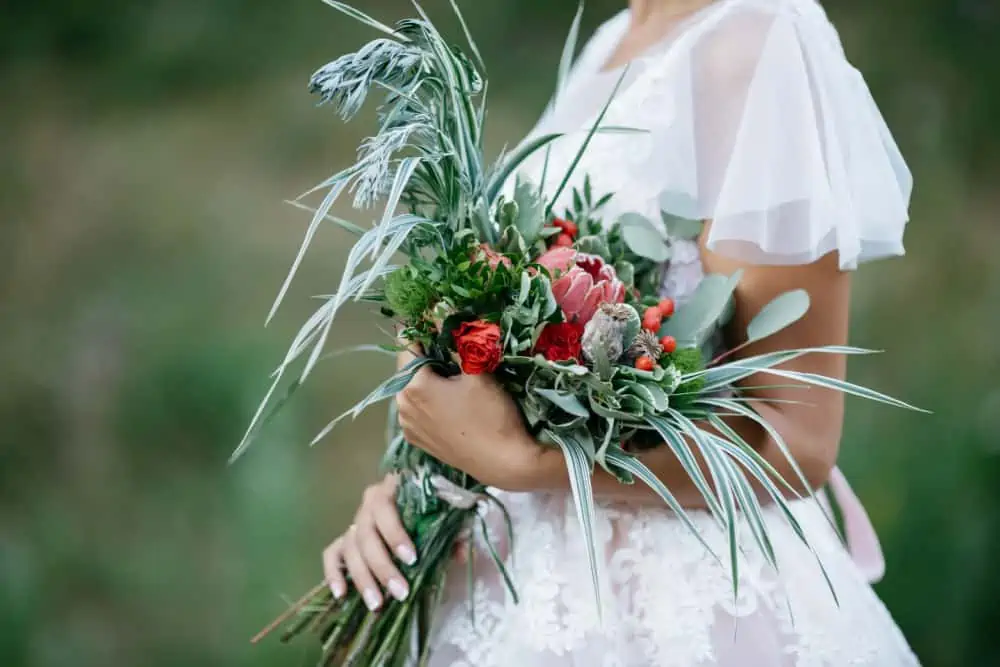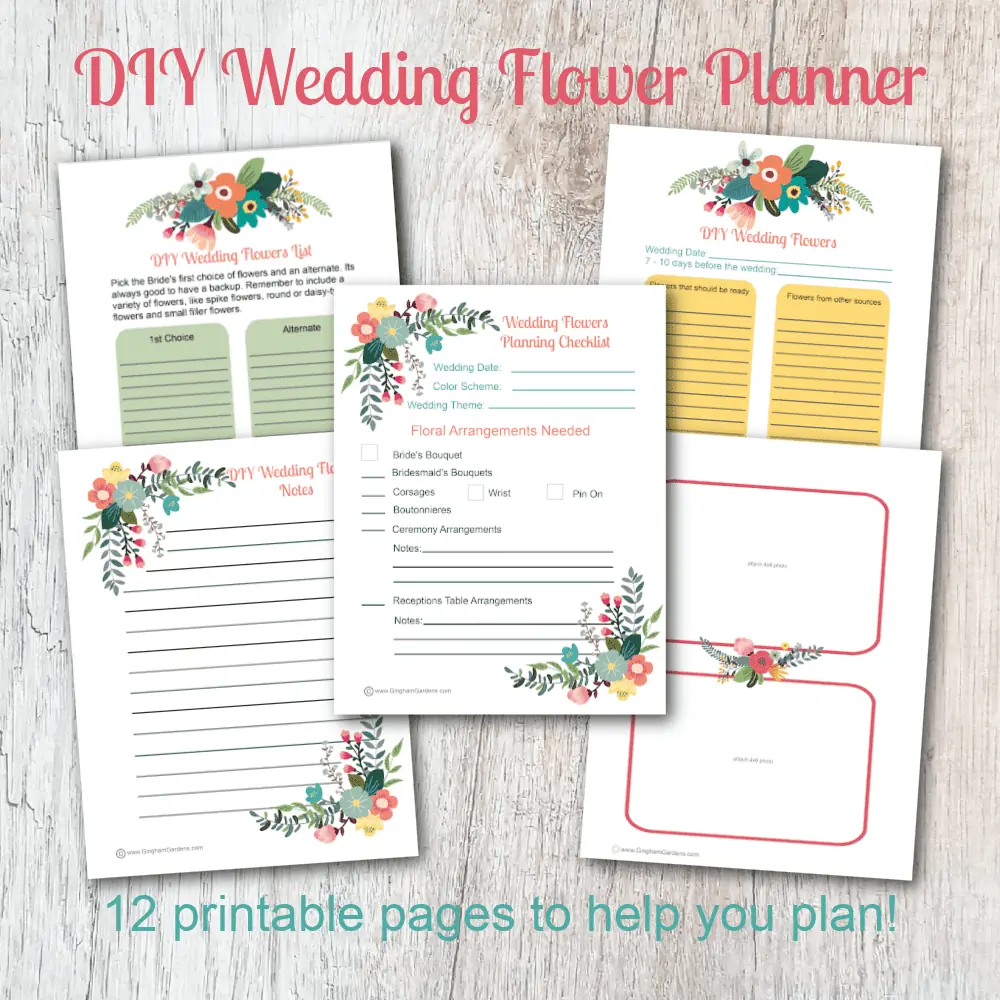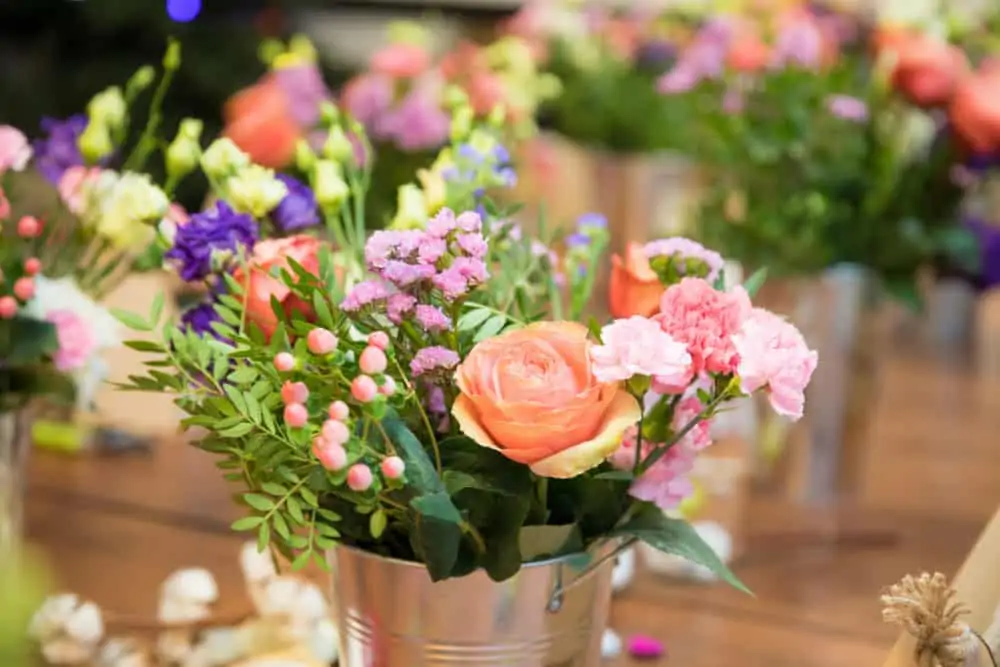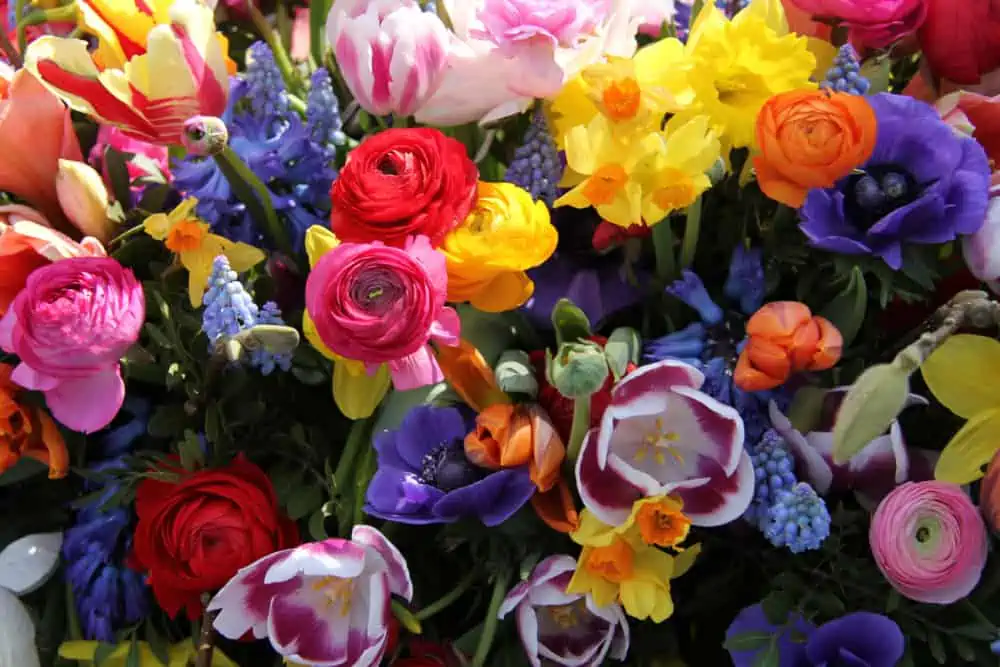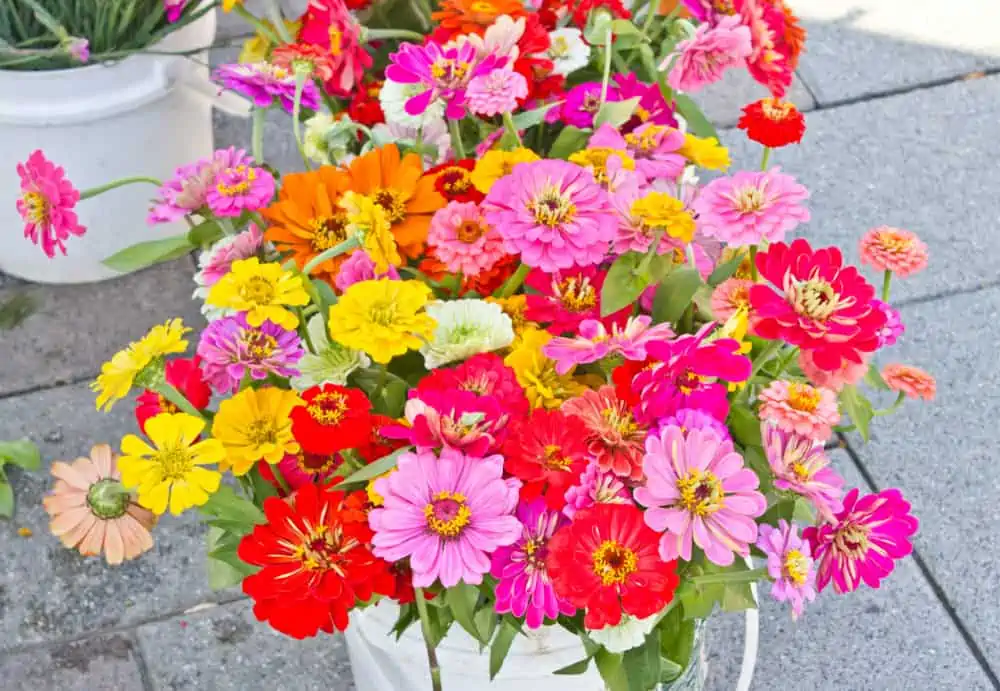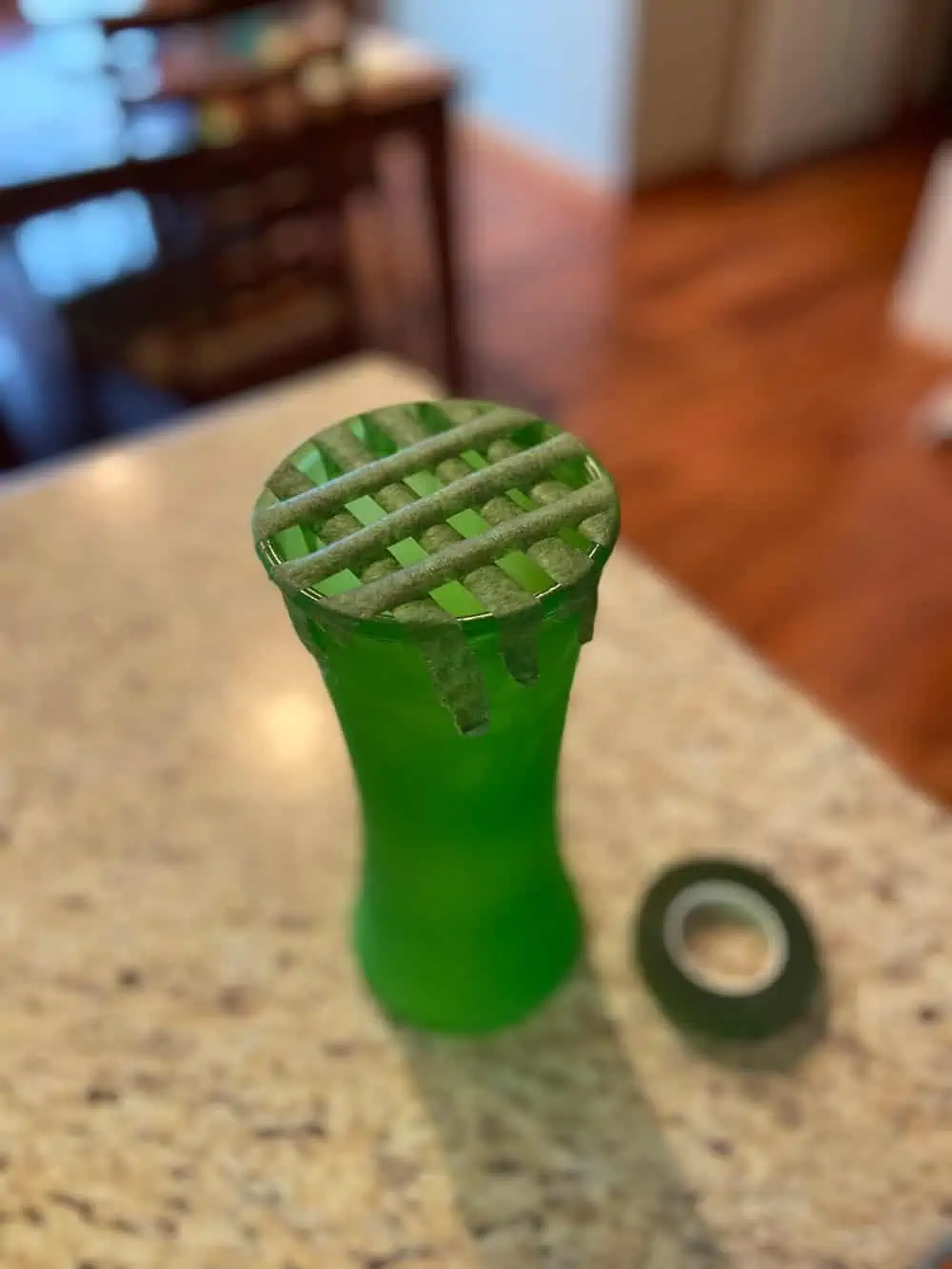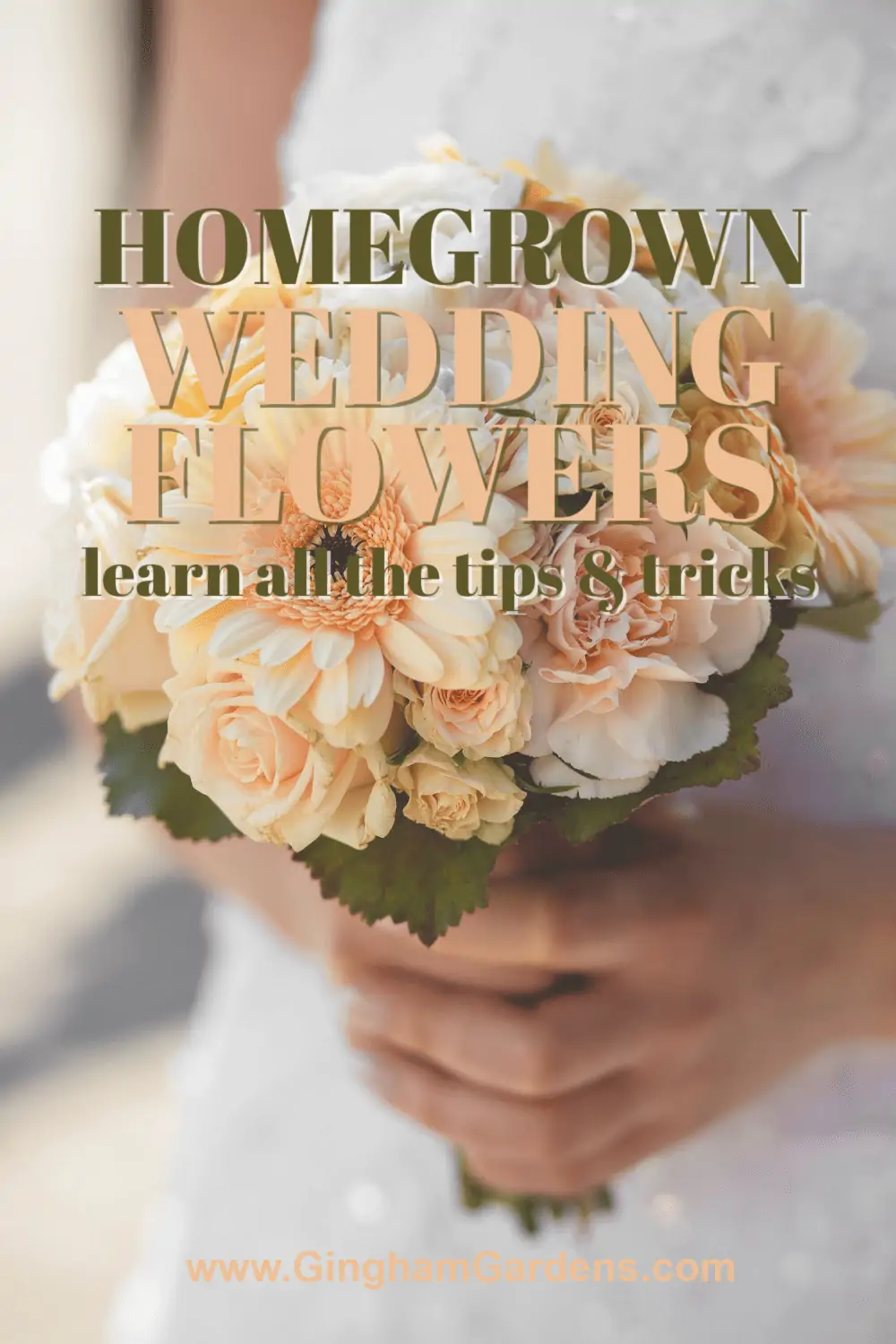Homegrown Wedding Flowers (Tips & Ideas)
It’s no secret that a wedding is one of the most special moments in a girl’s life. It’s her day to shine. Besides the beautiful bride, it’s the flowers that are the main focal point of any wedding. In this article, I’ve narrowed down the best homegrown wedding flowers based on a variety of colors, seasonal blooms, and how well they handle being cut and arranged. I’ll even throw in some tips on how to make the floral arrangements and what supplies you’ll need.
This post contains affiliate links. If you click on
one of the links and make a purchase,
I may receive a small commission at no additional cost to you.
See full disclosure here.
What to Plan For When Growing Wedding Flowers
Maybe you want to grow your own wedding flowers or have been asked to grow flowers for a friend’s or family member’s wedding. This can be exciting and overwhelming all at the same time. Most people hire a floral designer and pay huge amounts of money for the most popular wedding flowers. You can see how enlisting a family member or friend has its benefits for whoever is fitting the bill. The cost savings alone would be pretty motivating. Other than being budget-friendly, another huge benefit of homegrown wedding flowers is the huge variety of flowers that aren’t offered by a wedding florist. Of course, being a blessing to the special couple on their big day sounds pretty fun too.
Some things to consider:
- First, you need to find out the color scheme.
- Second, what time of year is the wedding?
- The wedding date?
- What is the wedding theme?
- What flower arrangements need to be made?
Stay organized with this printable DIY Homegrown Wedding Flower Planner.
Available here for $5 (US)
Typical wedding flower arrangements:
- Bridal Bouquet
- Boutonnieres
- Corsages
- Bridesmaid’s bouquets
- Ceremony arrangements
- Aisle decorations
- Reception table arrangements
- and any other arrangements for the bridal shower or rehearsal dinner
Whether you agree to make all of these or not, it’s best to make sure everyone is on the same page with what you are committing to. Once you know roughly how many flowers you’ll need, you’ll probably want to double that number.
The Best Homegrown Wedding Flowers
There are many types of flowers that will be a great choice for wedding flowers, but we want to keep this simple. Now this list is not even close to exhaustive, but I’m trying not to make you feel as overwhelmed as I was researching what the best flowers are for the special day (just kidding… sort of).
Perennial Flowers
Mind you, perennial plants will need to be well established in order for them to produce enough blooms for you to use. So unless you have 2 to 3 years advance notice, you should only rely on these if you already have them available to you.
The Best Perennial Cut Flowers for Spring Weddings
| Flower Variety | Colors | Hardiness Zones |
| Daffodils* (best used by themselves) | White, yellow | 3 – 7 |
| Dianthus | White, Pink, Red, Lavender | 3 – 9 |
| Lilac | White, Pink, Purple, Lavender | 3 – 7 |
| Lily-of-the-Valley | White, Pink | 3 – 9 |
| Peonies | White, Pink, Red, Orange, Yellow | 3 – 8 |
| Ranunculus (grow as annuals in colder zones) | White, Pink, Red, Purple, Orange, Yellow | 8 – 11 |
| Roses | White, Pink, Red, Purple, Orange, Yellow | 4 – 9 |
| Tulips* | White, pink, yellow, orange, red | 3 – 7 |
*Grown from bulbs planted in the fall
The Best Homegrown Flowers for Summer Weddings (Perennials)
| Flower Variety | Colors | Hardiness Zones |
| Baby’s Breath | White, pink | 4 – 9 |
| Coreopsis | White, Pink, Red, Orange | 2 – 11 |
| Dianthus | White, Pink, Red, Lavender | 3 – 9 |
| Hydrangea | White, Pink, Red, Purple, Green | 3 – 9 |
| Lilies | White, Pink, Red, Orange, Yellow | 4 – 8 |
| Peruvian Lily (Alstroemeria) | White, Pink, Red, Purple, Orange | 7 – 10 |
| Roses | White, Pink, Red, Purple, Orange, Yellow | 4 – 9 |
| Phlox | White, Pink, Purple | 4 – 8 |
| Shasta Daisies | White | 4 – 9 |
| Yarrow | White, Pink, Red, Yellow | 3 – 10 |
Easy to Grow Perennial Flowers for Late Summer or Fall Weddings
| Flower Variety | Colors | Hardiness Zones |
| Asters (New England) | White, Pink, Purple | 3 – 8 |
| Chrysanthemums | White, Yellow, Orange, Bronze | 4 – 9 |
| Dianthus | White, Pink, Red, Lavender | 3 – 9 |
| Hydrangea | White, Pink, Red, Purple, Green | 3 – 9 |
| Rudbeckia | Yellow, Orange, Russet | 3 – 9 |
| Roses | White, Pink, Red, Purple, Orange, Yellow | 4 – 9 |
| Yarrow | White, Pink, Red, Yellow | 3 – 10 |
Grasses and Foliage to Include in Wedding Centerpieces and Bouquets
You probably either already have some of these growing in your yard or you know someone who does. I recommend finding ways to use what’s already available to you, so you can focus more on growing the cut flowers. Experiment with cuttings from shrubs with pretty foliage by clipping a few and putting them in water to see how long they will last in a vase.
- boxwood
- dogwood
- ninebark
- herbs, like basil, mint, dill, etc.
- plumes and foliage from grasses (like pampas grass)
- hosta leaves
- ferns
Best Annual Flowers to Grow for Weddings
Meanwhile, annual plants are an ideal choice because they can be faster growing and have longer bloom times. Depending what zone you are in, its important to note that annual flowers will be the best for summer or fall weddings. Unless you’re in warmer gardening zones, it will be difficult to gauge when your annual flowers will be ready.
| Flower Variety | Colors |
| Amaranth | Pink, Red, Dark Red, Russet |
| Asters | White, Pink, Purple |
| Cosmos | White, Pink, Red, Yellow, Orange |
| Dahlias (grown from tubers) | White, Pink, Purple, Red, Orange, Yellow |
| Larkspur | White, Blue |
| Queen Anne’s Lace | White |
| Snapdragons | White, Yellow, Pink, Red, Orange, Coral, Peach |
| Sunflowers | Yellow, Orange, Russet |
| Sweet Peas | White, Pink, Red, Blue |
| Statice | White, Blue, Pink |
| Strawflowers | White, Pink, Yellow, Orange |
| Zinnias | White, Pink, Red, Purple, Orange, Yellow, Green |
Unfortunately, crop failures are always a possibility and there is no guarantee what you plant will be ready in time, so make sure you have a backup plan. Farmer’s markets, friendly neighboring flower gardeners, Costco, Sam’s Club, local flower farmers, ditches, local florists and grocery stores would be good ideas to keep in your back pocket just in case. In other words, make sure the bride knows that you cannot promise her favorite flowers.
For additional resources on growing a cutting garden, click here.
4 Tips for DIY Wedding Flower Arrangements
Supply List
- Floral Tape
- Floral Wire (Thinner gauge for boutonnieres/corsages. Thicker gauge for the bridal bouquet.)
- Wire Cutters
- Ribbon, twine, or rope
- Boutonniere Pins
- Corsage Wristlets
Tip # 1 – How to Make Boutonnieres
Have you ever made a boutonniere? It’s actually really fun and simple. If you have a lot to make I recommend enlisting some help from your crafty friends and family.
- Choose 1-3 feature flowers and a few small sprigs of a filler and/or foliage plant.
- Cut them all to about the same length (about 3”).
- Poke a 4-5” long piece of floral wire into the stems of each feature flower roughly ⅛”-¼” below the flower and wrap their stems with the exposed wire. This gives you more control over the positioning of the flowers.
- Using floral tape starting at the top of the stem closest to the base of the flower, wrap the stem tightly making sure you cover all of the wire.
- Gather up all the flowers you wrapped and add in the filler/foliage to make a tiny bouquet.
- Cut all of the stems to the same length and wrap them all together with floral tape.
- Using some ribbon or small rope depending on the wedding theme tie a bow around the wrapped stems for the finishing touch.
- Make sure you have pins to attach them to the lapels.
Bouquets and corsages are slightly more complicated, but if you follow the same basic principles as the boutonnieres you can totally do it. If you are more of a visual person, I recommend finding some good tutorials on WikiHow or YouTube.
Tip #2 – Making Floral Centerpieces with Homegrown Wedding Flowers
Supply List
- Floral Foam
- Centerpiece containers
- Ribbon or rope
Most people like to be able to see the people sitting across the table at the reception. They also don’t want their view of the bridal party blocked even if it is by your beautiful flowers. A great way to avoid this is by using floral foam in a shallow container. Simply make sure your container has a waterproof lining and cut the foam to fit with a regular kitchen knife. Soak the foam with water before arranging your flowers directly into the foam.
Unless, you’re a professional floral arranger (and if you are, you likely aren’t reading this post), this will take some trial and error to get just the right look. I recommend taking a break after your first arrangement, especially if you are second guessing yourself, and walk away. That always works for me.
Tip #3 – Making Vase Arrangements
Some of us will simply take a bouquet of flowers and stick them in a vase. The flowers will then all splay out to the sides and it makes for a ramshackle looking arrangement. I think those are my favorite.
First, you want a clean, dry vase. You can be creative here, but keep the wedding theme in mind. For instance, my daughter’s wedding was in a barn venue, so the theme was fairly rustic. For her guest table centerpieces, we used mason jars.
Next, take either floral tape, scotch tape or thin strips of masking tape and make a grid over the opening. The goal is to have spaces big enough for the stems to have very little wiggle room. If you’re using mason jars, these gadgets work perfectly.
Then, use the vase as your guide for how short to cut each flower by lining them up to the vase at the edge of a sink or counter. Move the flower up and down to determine where you want it to sit once it’s in the vase and then cut it accordingly. Does that make sense? Keep doing this for each flower you put in the vase.
You can create handheld bouquets basically the same way, still using the vase as your guide, but instead of placing the flowers in the vase gather them in one hand. Once you have the bouquet looking just right, clip all the stems evenly; then wrap and tie the gathered flowers with ribbon.
For more excellent tips on flower arranging, by sure to check out: How to Arrange Flowers from Your Garden.
Tip #4 – Practice Makes Perfect (or Good)
Not everyone is perfect at something the first time they do it. Who am I kidding? Is anyone? Imagine how much less stress you’ll be under on the wedding day if you practice these skills beforehand. Get your helpers together and make a party out of it. I know I would love to go to something like that.
The most important thing is really just having fun with this whole process. I’m sure it will have its challenges, but that will make it all the more rewarding. And what a cool skill to add to your gardening tool belt. Homegrown flowers are a great option for weddings and the perfect way to add a personal touch to your or your loved one’s special day.
What do you think? I hope you’ve found our guide for Homegrown Wedding Flowers helpful. If you have additional thoughts or experiences, please leave a comment below. We love your input!
Happy gardening,
Joanna
p.s. Feel free to save the pictures throughout the post and the pins below to your favorite flower gardening or wedding flower board on Pinterest to remind you of the post later. If you hover in the upper left-hand corner of the picture, you’ll see the little Pinterest icon. Just click it and pin away.
p.p.s I’d love to have you follow Gingham Gardens on Pinterest. Lots of great gardening ideas and tons of eye candy for gardeners. Gingham Gardens is also on Facebook.
Stop by Gingham Gardens’ Amazon Influencers Store!
Pins to Save to Your Favorite Gardening or Wedding Flower Board:

